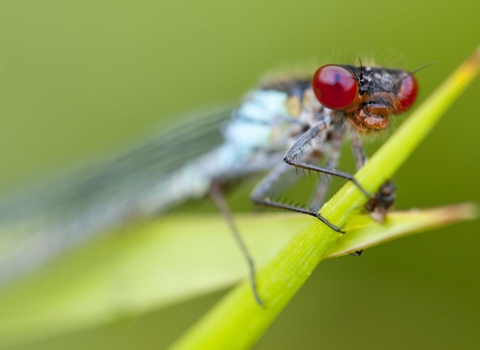
©Ross Hoddinott/2020VISION
Red-eyed damselfly
The Red-eyed damselfly is a small, but robust, damselfly of canals, ponds, lakes and slow-flowing rivers. As its name suggests, it has bright blood-red eyes, but a mostly black body.

©Ross Hoddinott/2020VISION